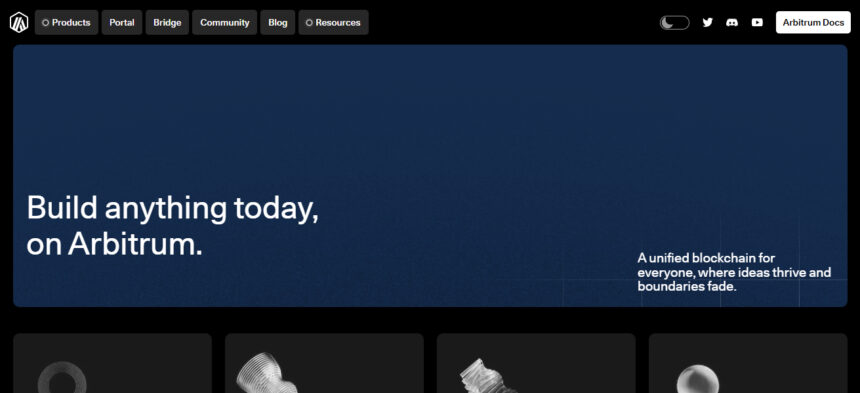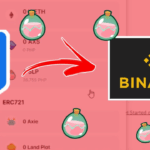In this article, I will delve into Arbitrum Blockchain Options, highlighting the best ones that improve scalability, lower transaction fees, and increase transaction speed on Ethereum.
These substitutes range from layer-2 rollups like Optimism and zkSync Era, to high performance layer-1 blockchains like Solana and Avalanche.
These substitutes help developers and users to build and use secure, flexible and fast solutions for DeFi, NFTs and dApps, which expands the options available with Arbitrum.
Key Points & Arbitrum Blockchain Alternatives
| Blockchain / Token | Key Points |
|---|---|
| Optimism ($OP) | Ethereum Layer-2 scaling solution using Optimistic Rollups; focuses on speed and low fees; strong ecosystem integration with major dApps; uses OP Stack to power other chains like Base (by Coinbase). |
| zkSync Era | Layer-2 solution leveraging zero-knowledge rollups (ZK-Rollups); prioritizes security and scalability; supports native account abstraction; aims for seamless user experience and fast withdrawals. |
| Starknet ($STRK) | ZK-Rollup Layer-2 built with STARK proofs; highly secure and scalable; supports complex smart contracts via Cairo language; focuses on decentralization and developer flexibility. |
| Polygon zkEVM | Ethereum Layer-2 using ZK-Rollups with full EVM compatibility; enables faster, cheaper transactions; easy migration for Ethereum dApps; backed by strong Polygon ecosystem. |
| Solana ($SOL) | High-performance Layer-1 blockchain; uses Proof-of-History (PoH) and Proof-of-Stake (PoS); extremely fast and low-cost transactions; ideal for DeFi, NFTs, and Web3 apps. |
| Avalanche ($AVAX) | Layer-1 network with customizable subnets; fast finality (~1 sec) and low fees; supports multiple virtual machines including EVM; scalable and eco-friendly consensus mechanism. |
| Polygon ($MATIC) | Leading Ethereum scaling solution; offers multiple technologies (PoS, zkEVM, Supernets); wide dApp adoption; focuses on interoperability and scalability. |
| Celestia ($TIA) | Modular blockchain focused on data availability; separates consensus from execution; enables developers to build custom rollups easily; key player in modular blockchain stack. |
| Near Protocol ($NEAR) | Layer-1 sharded blockchain; uses Nightshade sharding for scalability; fast, low-cost transactions; developer-friendly with Rust and JavaScript smart contract support. |
| Immutable X | Layer-2 for NFTs and gaming on Ethereum; uses ZK-Rollups for zero gas fees and instant trades; strong partnerships with major Web3 games; focuses on NFT scalability and user experience. |
10 Arbitrum Blockchain Alternatives
1. Optimism ($OP)
Optimism ($OP) has gained traction as a predominant substitute to Arbitrum, working to scale Ethereum with Optimistic Rollup technology.
This technique allows Ethereum to uphold its security. Whith Optimism transactions are faster and cheaper than Ethereum’s base network.
Optimism is unique due to its OP Stack which allows developers to design their own Layer-2 networks with shared liquidity and interoperability.
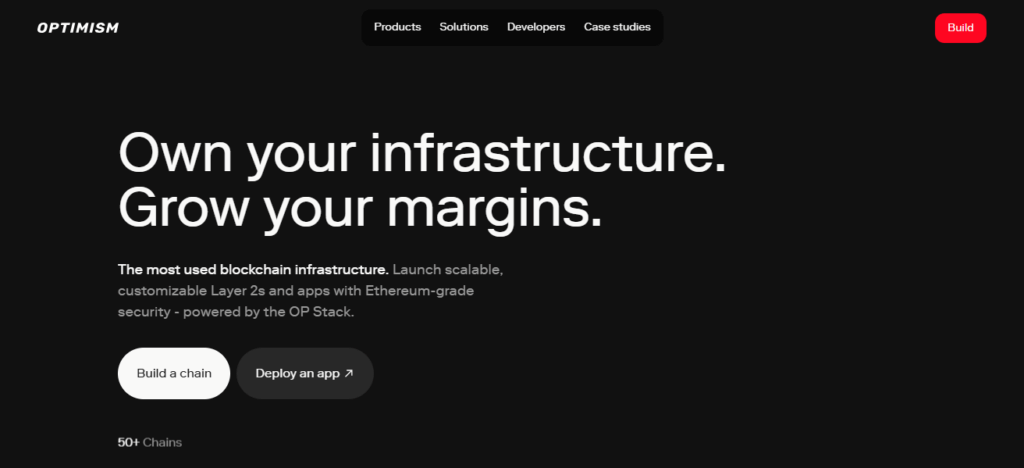
This modular approach is open-source and provides networks with the ability to interconnect, promoting co-operative growth.
Community-centered governance is paired with sustainable funding for public goods to construct a tokenomic ecosystem built to grow and decentralize over time.
With impressive speed and unique technology, Optimism may be the most capable alternative to the Arbitrum network.
Features Optimism ($OP)
- Optimistic Rollups: Scales Ethereum by operating off-chain Ethereum Rollups to process transactions while securing them on-chain.
- OP Stack: Modular framework for building custom Layer-2 chains where all liquidity is pooled.
- Low Fees & Fast Transactions: Build dApps with improved throughput while minimizing transaction costs.
- Community & Governance: Public goods funding, along with governance on the protocol, is community-driven.
2. zkSync Era
zkSync Era is a highly scalable Arbitrum alternative that utilizes zero-knowledge (ZK) rollup technology to improve Ethereum transaction speeds, reduce costs, and improve transaction security.
Unlike Arbitrum which employs the Optimistic Rollup model, zkSync Era employs immediate transaction verification through cryptographic proof and instantaneous withdrawal.
Its proprietary account abstraction feature enables payment of transaction fees in any cryptocurrency and significantly improves wallet user interface.
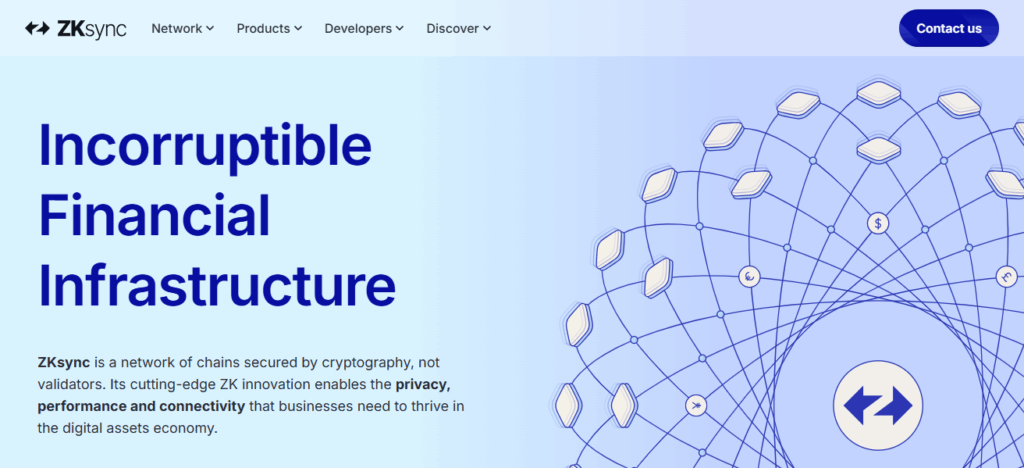
As a fully compatible Ethereum Virtual Machine (EVM) environment, zkSync Era enables Ethereum-based dApps to move over effortlessly.
With a focus on sophisticated user policies and easy user onboarding, zkSync Era is scalable to the layer-2 solution standard and exceeds the usability of rollups.
Features zkSync Era
- ZK-Rollups: cryptographic proofs to secure transactions while instantly verifying them.
- Fast Withdrawals: asset transfers will be near instantaneous compared to Optimistic Rollups.
- Account Abstraction: Onboarding is seamless, and users can pay fees with any token.
- EVM Compatibility: Deploy Ethereum dApps without any modifications.
3. Starknet ($STRK)
Starknet ($STRK) is one of the best alternatives to Arbitrum and addresses Ethereum’s scaling issues by employing STARK-based zero-knowledge proofs which are among the most secure and efficient.
Unlike Arbitrum which utilizes Optimistic Rollups, Starknet immediately validates transactions and does not need fraud proofs which results in faster finality.
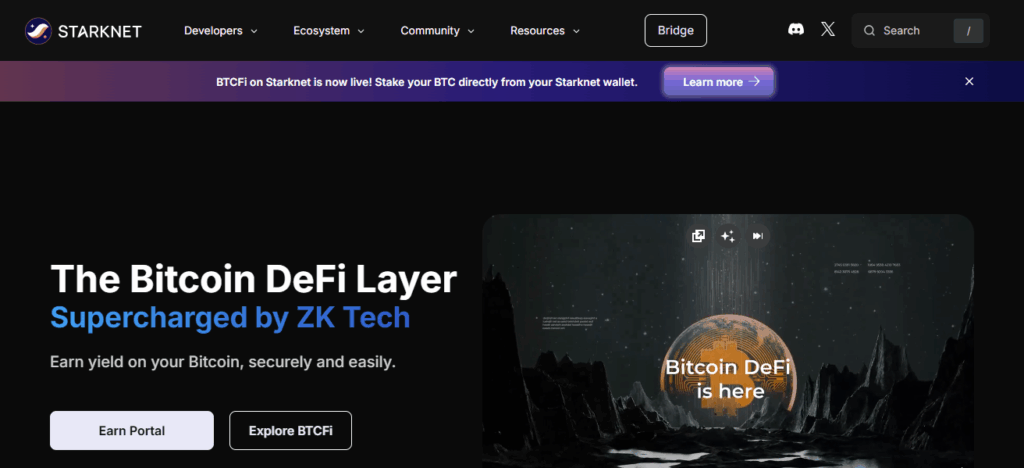
Transactions are built on the Cairo programming language which is also specifically built for high-performance decentralized applications, providing developers flexibility in the creation of intricate smart contracts.
With an emphasis on scalability, privacy, and composability, Starknet is able to service challenging applications in DeFi and blockchain-based gaming.
Starknet’s novel proof system and commitment to developers places it ahead of the competition in Layer-2 scalability.
Features Starknet ($STRK)
- STARK-Based ZK Proofs: Offers transaction verification that is secure and scalable, along with high security.
- Cairo Language: Provides the ability to create advanced dApps by flexibly programming smart contracts.
- Instant Finality: No fraud proofs required to quickly validate transactions.
- Decentralized & Composable: Enables DeFi, NFT, and gaming applications to be modular and scalable.
4. Polygon zkEVM
Polygon zkEVM is one of the best alternatives to Arbitrum and provides Ethereum scalability using zero-knowledge rollups while remaining fully compatible with the Ethereum Virtual Machine.
This provides a seamless and secure way to integrate the performance of zkEVM by the Polygon network with the remaining Ethereum ecosystem as developers can deploy existing Ethereum Smart Contracts without modifications or redeveloping the contracts.
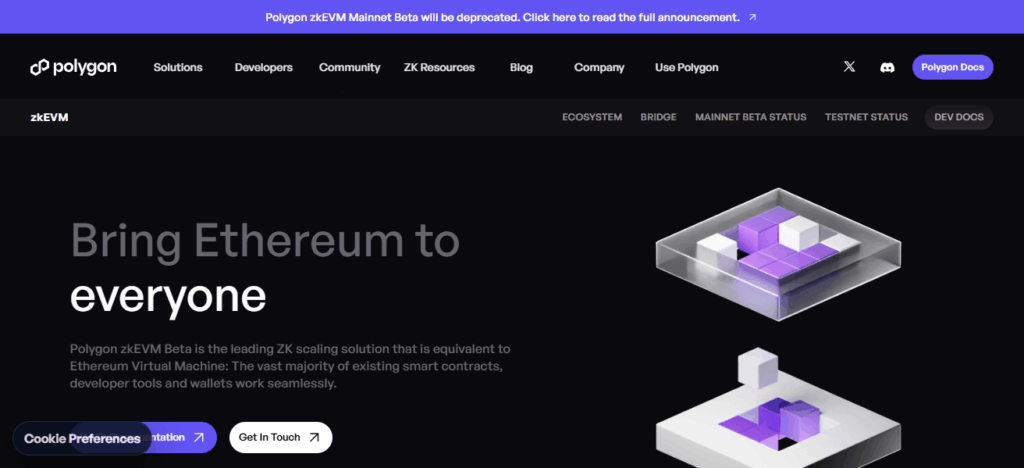
Polygon zkEVM zk proofs secure faster transaction finality and reduced withdrawal times. Polygon zkEVM rollups provide low fees, high throughput, and efficient data compression making it suited for large scale DeFi and enterprise applications.
Polygon zkEVM is complemented by Polygon’s robust ecosystem providing seamless fundamentals of Ethereum and enhanced or advanced Ethereum zk rollups providing an efficient, secure, and developer-friendly Arbitrum alternative Layer 2.
Features Polygon zkEVM
- ZK-Rollup Scaling: Achieves fast and low-cost transactions by using zero-knowledge proofs.
- EVM-Compatible: Ethereum dApps can be migrated seamlessly.
- Efficient Data Compression: Storage and network congestion are minimized.
- Polygon Ecosystem: Excellent developer assistance and interoperability with other Polygon products.
5. Solana ($SOL)
Solana ($SOL) stakes a claim as an Arbitrum substitute, being a high-performance Layer-1 blockchain, one that prioritizes speed and low cost multiplexer transactions.
Arbitrum utilizes Ethereum Layer-2 as a rollup, Solana utilizes a hybrid Proof-of-History and Proof-of-Stake architecture that affords thousands of transactions to process with near-instant finality.
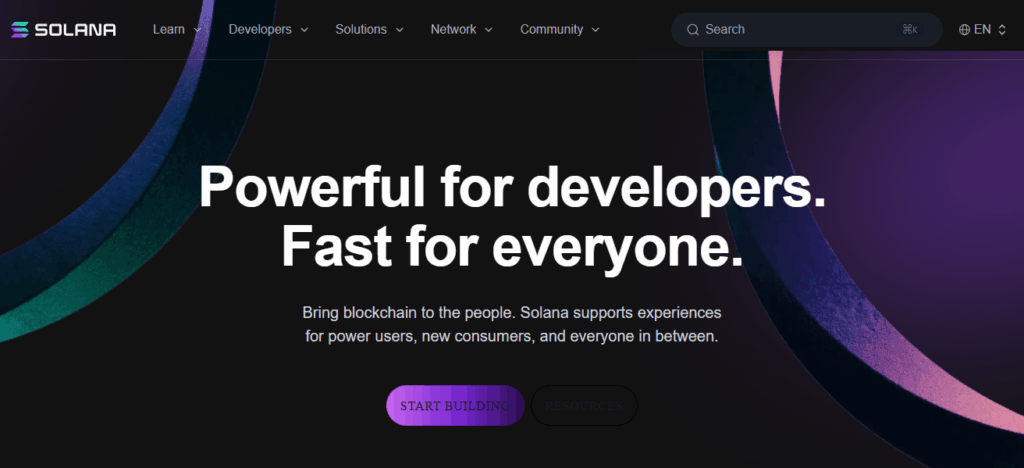
It handles large scale, decentralized applications, DeFi, and NFT Solana without the problem of congestion. Congestion is overcome by Solana’s architecture of parallelized processing and consensus mechanisms that diverge from standard rollups.
Because of a combination of high throughput and low fees with developer access, Solana is a robust alternative for projects that are Layer-2 restricted.
Features Solana ($SOL)
- Proof-of-History + PoS: A one-of-a-kind consensus structure that allows for thousands of transactions every second.
- High Throughput & Low Fees: Intended for large-scale dApps, DeFi, and NFTs.
- Parallelized Processing: Deals with several transactions at once.
- Robust Developer Tools: Complete environment for smart contracts and other blockchain projects.
6. Avalanche ($AVAX)
Avalanche ($AVAX) is an excellent Layer-1 blockchain option compared to Arbitrum since it also provides high throughput and performance without the high fees.
Arbitrum is an Ethereum Layer-2 rollup and does not have its own consensus protocol while Avalanche uses its own Avalanche consensus protocol which allows for thousands of transactions per second with sub second transaction finality and complete decentralization.
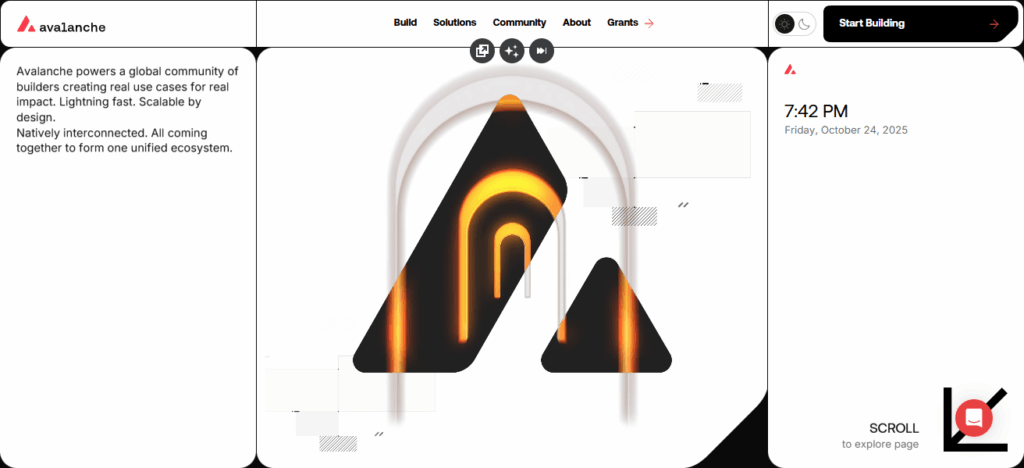
Its unique subnet architecture allows for the creation of highly customizable blockchains and rules which is fantastic for enterprise and DeFi use cases.
It is also fully EVM compatible so developers can seamlessly migrate their dApps. All of this makes Avalanche a complete performance and control option that is ideal for projects that need to scale and need something better than Arbitrum.
Features Avalanche ($AVAX)
- Avalanche Consensus: Quick and low-latency finalization of transactions.
- Subnet Architecture: Tailoring of blockchains for specific use cases.
- EVM Compatibility: Easy use of Ethereum dApps for migration.
- Scalable & Flexible: Great for DeFi, cross-chain, and enterprise solutions.
7. Polygon ($MATIC)
Polygon ($MATIC) stands out as a competitor to Arbitrum while serving as a Layer-2 Ethereum solution that lowers transaction costs and lessens network congestion while providing a high level of security.
Whereas Arbitrum uses a more singular solution, Polygon uses a multi-solution system that utilizes the Proof of Stake chain, zkEVM, and customizable Supernets, providing developers the ability to easily pick the most suitable scaling solution.
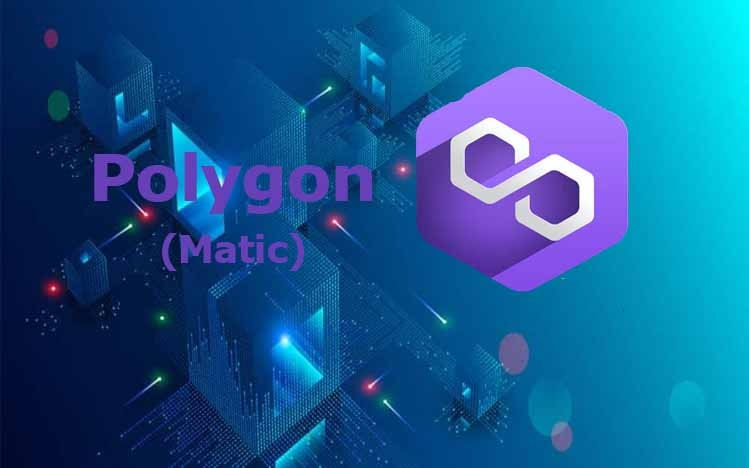
The wide array of interoperable and customizable decentralized applications, along with various decentralized finance and non-fungible token systems, adds to the utility of the system.
With rapid and inexpensive transactions, along with excellent developer resources, Polygon remains a Layer-2 Ethereum alternative to Arbitrum.
Features Polygon ($MATIC)
- PoS & Multi-Solution Layer-2: Flexible scaling with PoS chain, zkEVM, and Supernets.
- Low Fees & High Speed: Transactions for DeFi and NFT projects are efficient.
- Large Ecosystem: Great with multiple dApps and integrations.
- Interoperable & Developer-Friendly: Simplified smart contract deployment with available tools and APIs.
8. Celestia ($TIA)
Celestia ($TIA) is different from Arbitrum because it has a unique modular blockchain design. With regard to construction
Celestia differs because it disengages consensus and data availability from execution. Arbitrum is an Ethereum Layer-2 rollup, and Celestia is not.
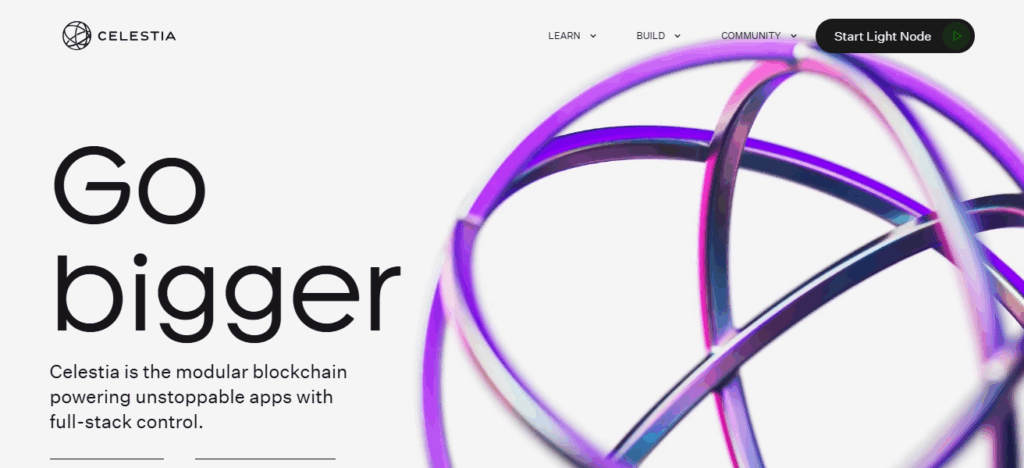
This lets developers build custom rollups with no execution layer restrictions. It is Celestia’s primary focus on data availability, consensus, and secure rollups that allows them to operate autonomously and independently.
Celestia’s blockchain inter-operability and architecture for Layer-2 customizations target and focus increasing blockchain network scalability.
Features Celestia ($TIA)
- Modular Blockchain: For better adaptability, consensus and execution are decoupled.
- Custom Rollups: Designed for Layer-2 chains with specific rules.
- Secure Data Availability: Guarantees Validation of transactions across multiple nodes.
- Scalable & Interoperable: Accommodates numerous applications while preventing congestion.
9. Near Protocol ($NEAR)
Near Protocol ($NEAR) offers a lucrative alternative to Arbitrum as a Layer-1 blockchain that targets high scalability, rapid transaction finality and low fees.
NEAR doesn’t utilize Ethereum Layer-2 rollups but Arbitrum does. NEAR employs Nightshade sharding, which breaks the network into multiple shards and processes transactions side by side, vastly improving transaction throughput.
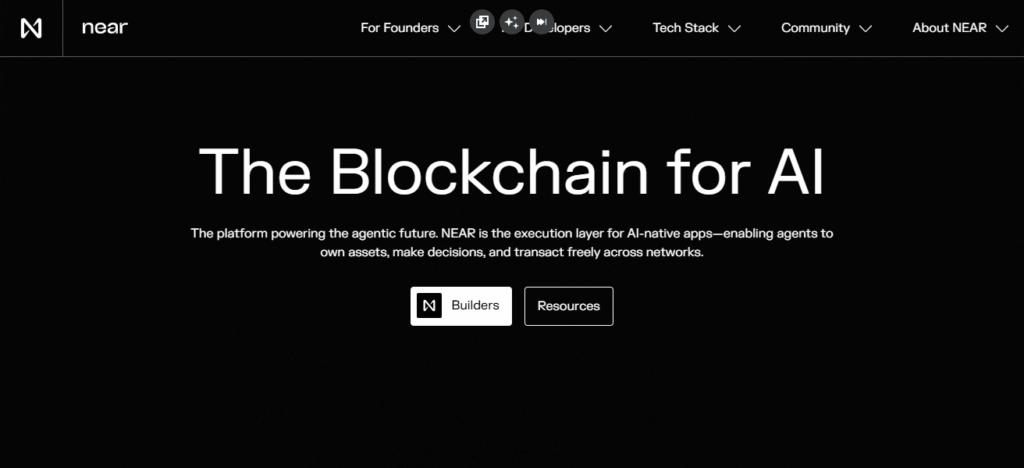
The simplicity of NEAR’s developer tools and support for smart contracts in Rust and JavaScript greatly ease dApp development and porting.
NEAR excels in user experience and seamless cross-shard communication, making it perfect for large scale applications, DeFi, and NFTs.
The combination of speed, accessibility and low costs places NEAR as a strong contender to Arbitrum for users and developers alike.
Features NEAR Protocol ($NEAR)
- Sharded Architecture: Uses Nightshade sharding for parallel processing of transactions.
- Low Fees & Fast Finality: Designed for high-throughput applications.
- Developer-Friendly: Smart contracts are available in Rust and JavaScript.
- User Focused: Simplifying user onboarding, along with cross-shard communication, and the DeFi/NFT apps.
10. Immutable X
Immutable X is a less generalized option to Arbiturm which is Layer-2 for Ethereum and focuses on NFTs as well as gaming.
While Arbiturm is more generalized to Ethereum Scaling, Immutable X is more concentrated as it employs ZK-Rollup technology which enables instantaneous, fee-less transactions
Which is useful for high trading NFT marketplaces and blockchain games. Immutable X is ZK-Rollap technology, focuses on user experience.
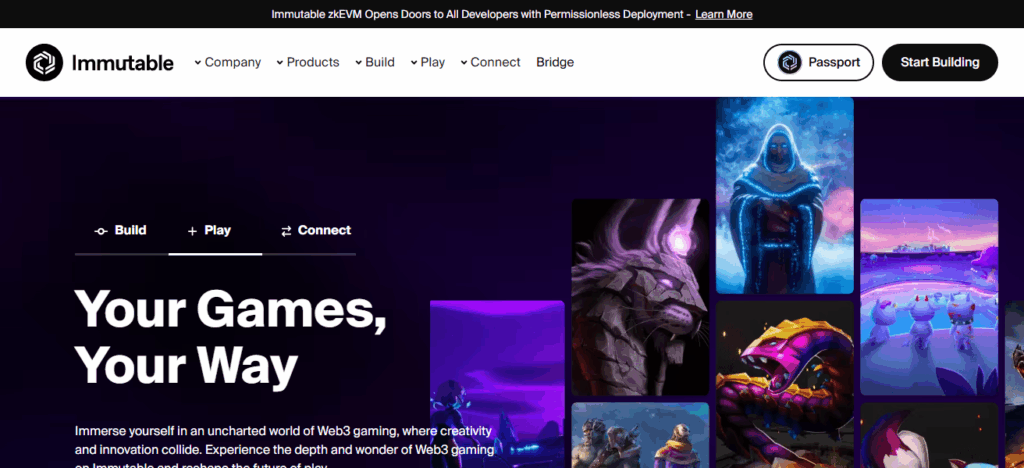
While Arbiturm focuses more on Ethereum gas-less transactions Immutable X focuses more on NFTs and gaming incorporating user experience.
Immutable X is unique for its Layer-2 solution and focuses on providing developers and gamers a seamless interaction with NFTs and gaming applications.
Features Immutable X
- ZK-Rollups for NFTs: Gasless instant NFT transactions and transfers on Ethereum.
- High Scalability: Supports high-volume gaming and marketplace activities.
- Carbon-Neutral Operations: Environmentally friendly Layer-2 solution.
- Developer & User Friendly: NFT minting, trading, and gaming experience is seamless.
Conclusion
In summary, alternatives to the Arbitrum blockchain address Ethereum’s scalability, and more, for example
Optimism and Polygon’s zkEVM Layer-2 rollups and Solana and Avalanche’s Layer-1 high-performance blockchains.
Each one has its own set of benefits. Some are quicker, cheaper, more modular, or specialized for NFTs.
This allows developers and users to select the most appropriate answer while reinforcing Ethereum’s extended ecosystem and blockchain tech adoption.
FAQ
What is an Arbitrum alternative?
A blockchain solution offering similar Ethereum scaling and Layer-2 benefits.
Why use Optimism over Arbitrum?
Faster transactions with modular OP Stack for custom Layer-2 chains.
What makes zkSync Era unique?
Uses ZK-Rollups for instant, secure, and low-cost transactions.
How is Starknet different?
STARK-based ZK proofs enable instant validation and complex dApps.
What is Polygon zkEVM?
A ZK-Rollup fully compatible with Ethereum smart contracts.


